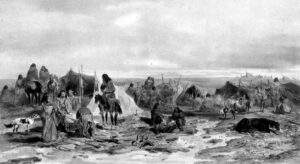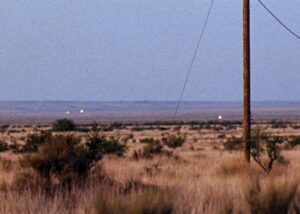After 107 years, the mystery of where in Antarctic waters that Ernest Shackleton’s Endurance ended up is over. An expedition team of marine researchers and archaeologists discovered the world-famous shipwreck in the early hours of March 9, 2022. It lay 3,000+ metres down, in the Weddell Sea.
Like other wrecks in polar waters that are deep enough to evade the destructive effects of ice and waves, the vessel is in exceptional condition.
How Shackleton’s ‘Endurance’ Was Found

Video still: The Falklands Maritime Heritage Trust, National Geographic
The team arrived in the region in mid-February aboard the icebreaker S.A. Agulha II. For more than two weeks, the team scanned a 240 sq km region where experts believed the Endurance foundered in 1915. Undersea drones located and documented the largely intact polar ship.
One of the most storied shipwrecks in history, the Endurance became trapped in sea ice on January 18, 1915. Its captain, Irish polar explorer Sir Ernest Shackleton, and his 28-man crew attempted to free the three-masted ship. But by the end of February, temperatures had plummeted, and the ship was frozen in place.
The Sinking of the ‘Endurance’
According to the Endurance22 team, pressure from the ice tore away the ship’s rudder post and crushed its stern. Shackleton wrote:
…We have been compelled to abandon the ship, which is crushed beyond all hope of ever being righted, we are alive and well, and we have stores and equipment for the task that lies before us. The task is to reach land with all the members of the Expedition. It is hard to write what I feel.

The Endurance three-masted ship of Shackleton’s 1914-1915 Antarctic expedition trapped in pack ice, 1915. Photo: Frank Hurley
Incredibly, the expedition team survived aboard the frozen Endurance until October 27, 1915. On that day, Shackleton made the decision to abandon it. By November 21, the Endurance finally sank to its watery grave in the Weddell Sea.
Shackleton’s great escape
After its sinking, there ensued one of the great survival stories in exploration history. In three lifeboats, all 28 crewmen traveled across sea ice and open water to Elephant Island. From there, Shackleton and a select team of five sailed 1,250km across the stormiest seas on earth in an open boat to little South Georgia.
Shackleton then somehow traversed the mountainous island to the far side, where a whaling station provided help. Even today, that wild alpine crossing impresses the few mountaineers who have managed to duplicate it. Shackleton’s remaining expedition members were rescued from Elephant Island on August 30, 1916.
National Geographic broke the news of Endurance’s recovery. A documentary of the 2022 expedition is set to air on National Geographic this fall.

Video still: The Falklands Maritime Heritage Trust, National Geographic
Other famous polar shipwrecks
The Endurance marks the latest historic polar shipwreck discovered in recent years. In 2014, after a concerted six-year search, Sir John Franklin’s ship, the Erebus, turned up in 11m of water in the Northwest Passage south of King William Island. Because of its location in such shallow water, the Erebus, which sank around 1848, was in much poorer condition than the Endurance.

During rare spells of calm weather, the Erebus is visible from the surface. Photo: Parks Canada

Parks Canada divers bring up artifacts from HMS Erebus in 2019. Photo: Jerry Kobalenko
Two years later, researchers found the Erebus‘s sister ship, the Terror, in the well-named Terror Bay, off King William Island. It lies 21 to 24m below the surface and is in much better condition than the Erebus.

Western end of the Northwest Passage, with sites of the shipwrecks of the Erebus, the Terror, and the Investigator.
Less celebrated than the Endurance, the Erebus, and the Terror, Robert McClure’s HMS Investigator was abandoned in 1853 after being trapped in the sea ice off northern Banks Island for three years.
The location of the shipwreck was never a mystery, but it lay in such a distant corner of the High Arctic that no one went to look for it until 2010. They found the ship in just eight metres of water, exactly where they expected it to be, in Mercy Bay off northern Banks Island.
Undiscovered but in known locations
Some still-undiscovered polar ships are just waiting for a research crew like the one that found the Endurance or even a passing cruise ship with its side-scan sonar switched on at the right time.
In 1883, the Proteus sailed northern Baffin Bay, between Canada and Greenland, to pick up the U.S. Arctic Expedition under Adolphus Greely. Greely’s men had been stationed on northern Ellesmere Island for two years, exploring and doing science for the First International Polar Year. Unlike almost every other polar expedition, they didn’t have their own ship. The Proteus had dropped them off two years earlier with a promise to return.
But 1883 was a bad ice year, and the Proteus couldn’t get within 300km of Greely’s men. Trapped in the ice, amid strong currents, ice floes crushed the Proteus like a walnut. The crew escaped in lifeboats, but Greely’s men were stranded, and 19 of 25 died in the aftermath, mostly from starvation. The spot where the Proteus went down is well-known — just remote. And it lies 350m down, so like the Endurance, it should be well-preserved.
The USS Bear, one of the ships that later saved the few Greely survivors, was found last year off the coast of Massachusetts. It had foundered in a gale decades after that arctic rescue.

The Proteus, beset in the ice before its sinking in 1883.

The Proteus lies 350m down in Kane Basin, just off east-central Ellesmere Island. Map: Alexandra Kobalenko






